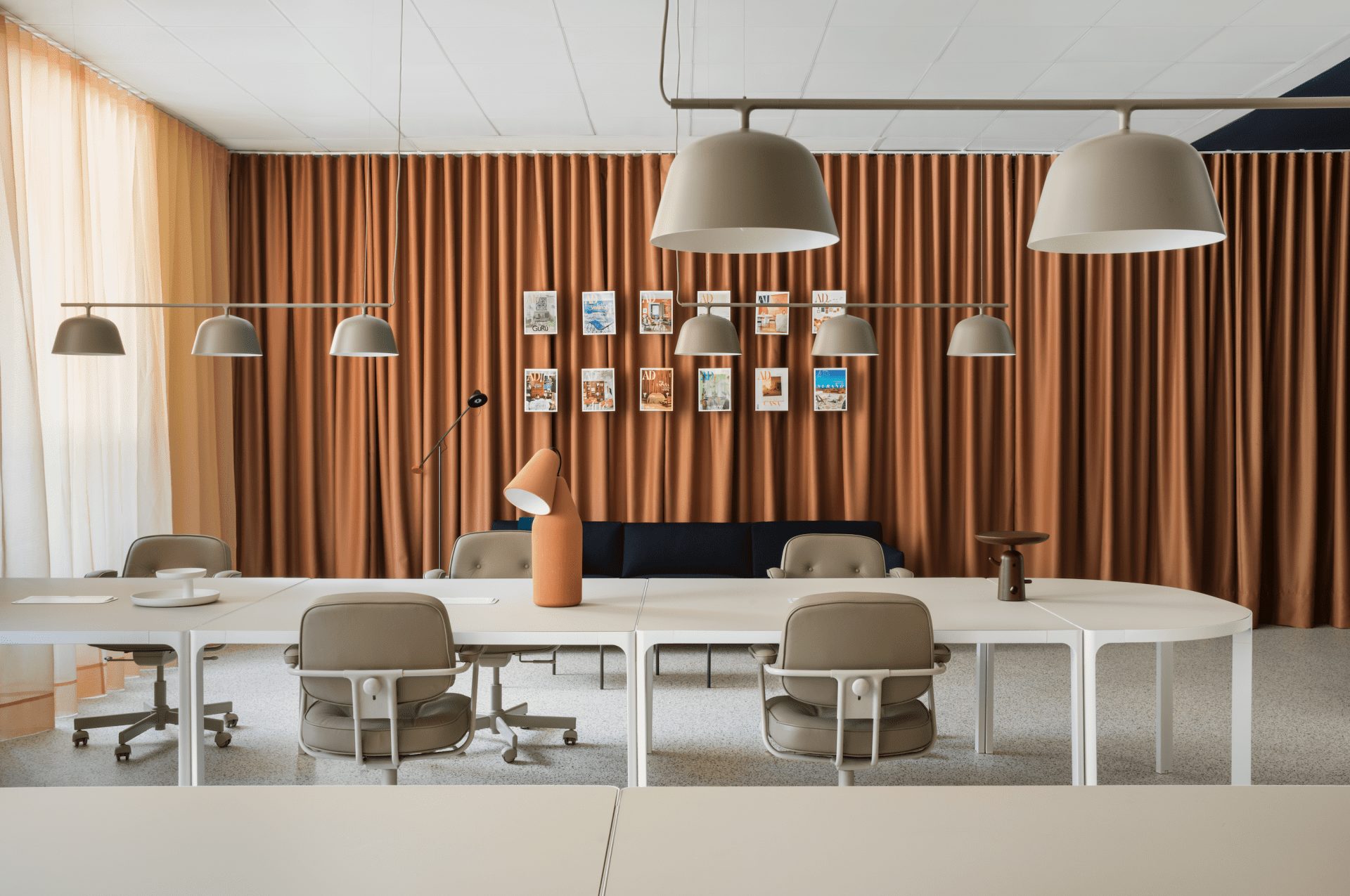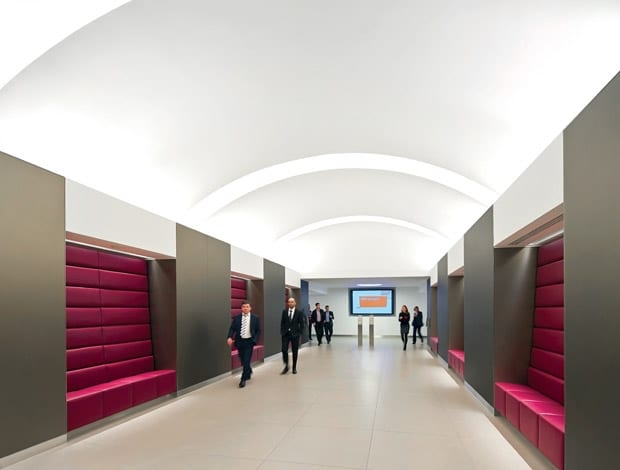 phil
phil
 Kerstin Zumstein asks Phil Hutchinson, joint managing director of design consultancy BDGworkfutures, to
Kerstin Zumstein asks Phil Hutchinson, joint managing director of design consultancy BDGworkfutures, to
look into the crystal ball of workplace developments
Where and when were you born?
In Cardiff, 1957.
How did you get into architecture?
I’ve always been fascinated by what design can do in terms of encouraging activity and behaviour. Initially it took me a while to understand whether I wanted to apply it to two- or three-dimensional design. Once I discovered the psychological side of interior design, it veered more towards art than science, and I wanted to explore it professionally.
What do you see as the main drivers of change for workplace design in the next 5 years?
The main influences will be:
- Efficient use of space (an issue that won’t go away)
- The increasingly short lifespan of work interiors, which has almost reached a similar cycle to retail, meaning new interiors every two to three years
- Technology-driven consumer wisdom – access to technology outside the workplace is often better than at the office, so demands are changing
What will these new demands entail?
Analyst Waltraud Beckmann coined the term “screenagers” in a report for Herman Miller, based on young people’s intuitive use of technology. I like that term a lot because it emphasises how comfortable teens are with learning, playing and working on screens. On the other hand we have the ageing population who struggle to keep up with the speed of technological changes. IT experts used to talk of a common platform, but in future we will need a tiered approach with different levels of technology. One-size-fits-all won’t work anymore. So future technologies will
be delivered by demands according to people’s different aptitudes.
You believe in the growth of dynamic work styles – what does that mean?
Well, I hope to see a continuation of the best styles of dynamic working. Good examples are our early projects with Andersen’s or BT’s agile work style programme – a structured approach to flexible, mobile and home working. Mobility and flexible contracts and conditions aren’t as joint up as they should be, probably because directors don’t like to sit next to human resources.
I think organisations would benefit from joining the property managers (facilities managers or real estate), marketing stakeholders and HR together to establish a powerful force for innovative work solutions.
Why do so few companies do that?
Firstly, these three departments speak a different language and traditionally play very separate roles. Secondly most work floors don’t enable companies to link all three physically. I must also add at this stage that I left IT out of the equation here – ideally it should be joined up too.
If organisations were to form such a force what would that mean for workplace designers like yourself?
It would make our jobs more complicated, that’s for sure. But the main challenge of our profession is to create workplaces that fit individuals of all ages and aptitudes. In my opinion, organisations need to do more research on settings outside of the office – for instance look into people in transit and how they work from home.
That hasn’t been analysed sufficiently yet.
We are already doing much more strategic analysis before putting pen to paper. But in future, we’ll be working in close-knit collaboration with technological consultants, branding experts, HR and marketing departments.
So, more collaboration inside a company as well as with external bodies?
Yes, it’s about knowledge workers sharing knowledge and working in a dynamic, flexible way.
Can workplace design enforce the adoption of dynamic working styles?
Design can provide solutions in the workplace but it’s not everything. Especially flexible work methods need to be clearly communicated to staff. If people don’t understand how to facilitate the given interior it won’t work. At BDG, Jill Parker, who shares the MD role with me, manages the communication of our strategies
to the clients with workshops, newsletters, pilot schemes and the intranet.
Where does communication currently go wrong?
Many companies are struggling with a loss of identity. On the one hand they don’t want to over impose their branding but at the same time they are in desperate need of developing a strong company culture. Identity is often communicated at the front door when you arrive at reception, but what about when people leave the building? The culture of an organisation needs to be felt throughout the workspace.
What’s your opinion on the headquarters debate – HQs, yes or no?
Yes, organisations need headquarters, be it a home base just for senior staff or a place to come back to, physically, culturally, spiritually. In the future I think HQs will function as the school of thought behind a company. They don’t have to be an office; they’ll take on new formats. I, for instance, like the idea of an HQ more like a university –
just think of Bill Gates and his philanthropic hub. HQ could be officially aligned with a university or a major charity or any other form of social outlet for that matter. So, yes, HQs will always exist but it will become more difficult to justify a flashy and expensive mid-city address.
And green issues? Spare us the usual spiel and tell me how you think the topic should be approached.
Green is a big topic. At BDG we say: “You need to make the business green before you make the building green.” As with dynamic working styles, organisations need to communicate to the employees what to do to be green. Many offices have their BREEAM certificates on the wall but that still doesn’t mean they are green. Running a full building is efficient and greener than using architectural strap-ons to ease the conscience.
It’s often a moral attempt. What does BDG do to make up for using raw materials, energy supplies, fossil fuels, etc?
BDG, as sister company to WPP, has been involved with charity work on a pro bono basis for years now. We all want to put something back into the world, it helps to remind us how privileged we are.
Once a month, we cook breakfast for homeless people at the Whitechapel mission.
Our staff also get two to three days a year to do things for charities they are interested in – we don’t force anyone to do it but you’ll be surprised how many get active. And we’re no exception. CSR (Corporate Social Responsibility) is growing stronger every day. Many companies are planting forests to make up for their air miles, etc.
Ok, to finish off, just a few short questions. Here’s the first one: biggest mistake in 20th-century architecture?
High street planners.
Good office furniture design?
Those companies that treasure their values higher than a product, such as Vitra, Moroso and Artemide.
Good workplace design?
The Johnson building [London] stands out because of the way it has linked vertical spaces. It also shows that offices don’t need the regular overhead lighting that developers seem to think is indispensable.































